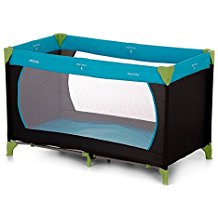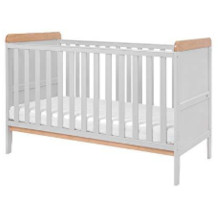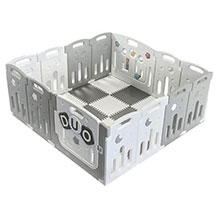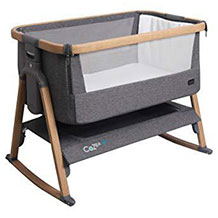Baby mattress purchasing advice: how to choose the right product
- What You Need to Know
- Baby mattresses must be medium-hard or hard, especially to reduce the risk of suffocation.
- In addition to innerspring, latex and foam baby mattresses, there are also models made of natural materials such as coconut fibres, virgin wool and horsehair.
- A wetness protector ensures that you don’t have to throw the mattress away if something goes next to the nappy.
- You don’t have to spend a lot of money on a good baby mattress. Even inexpensive models can be of high quality.
Baby mattresses: safe, individual, fitting
Babies need mattresses not only for sleeping. They are often also used as play or cuddle surfaces on which parents spend the first time with their newborn. The baby mattress must therefore ensure the baby’s safety and comfort not only when lying down, but in all situations. Product defects should never get in the way of the first precious moments with your child.
Mattress manufacturers are attuned to individual needs. For example, there are mattresses for allergy sufferers. For babies who sweat a lot, mattresses with moisture protection are of interest. If your baby is getting used to standing up at a very early age, a mattress with a step edge is recommended. Parents can choose the baby mattress that is best for their little one.
The most obvious feature of baby mattresses is their small size. As a rule, they measure 70 x 140 centimetres. Rarely, baby mattresses can be as small as 60 x 120 centimetres. This makes them easier to handle than adult mattresses. They are also cheaper because they require much less material to make.
What types of baby mattresses are available?
As a rule, baby mattresses are made of latex, foam, spring core or natural materials. So new parents have a wide range of different mattresses to choose from. How breathable they are, whether they are suitable for allergy sufferers and how much they cost often depends on the mattress core. It should be noted that none of the materials is fundamentally good or bad. It depends much more on the individual needs of the baby and the preferences of the parents.
Cold foam and foam mattress
The two types of mattresses are very similar because they are both made from the same material – polyurethane. In cold foam mattresses, unlike normal foam mattresses, the polyurethane is not heated during production. While this leads to some differences, the similarities are more numerous. For example, both provide a safe and comfortable sleeping experience. They are also well-suited for allergy sufferers because they can be easily aired out. It is also unlikely that the baby will get cold on a foam or cold foam mattress, as both variants are thermally insulating.
They are also easy to handle. Foam mattresses are the lightest of the baby mattresses and their flexibility even allows them to be rolled up. However, for those who are not convinced by the easy handling, the good price-performance ratio of the cold and foam mattresses may be decisive.
The two types of mattresses not only share many positive lying characteristics, but also disadvantages. Neither is ideal for babies who sweat a lot, as they are not particularly breathable. They can also become worn out too quickly. To avoid this, parents should make sure when buying that the material is as firm as possible. Even between mattresses made of the same material, there are differences in the degree of firmness. Last but not least, every children’s mattress should have a kick edge.
As similar as cold foam and foam mattresses are, they still have some differences: Cold foam mattresses are usually of a higher quality. That is why they are often a little more expensive. Their hardness is one of their greatest advantages. This means they return to their original shape more quickly after being subjected to pressure. As a result, they do not sag as quickly and are therefore more durable. In addition, cold foam mattresses are more breathable than foam mattresses. The latter, on the other hand, are usually cheaper.
Pro points
- Suitable for allergy sufferers
- EasyEasy to handle
- Cheap
Drawbacks
- Poor moisture regulation
- Become worn out more quickly
- Often no tread
Latex mattress
Future parents can avoid some of these disadvantages by choosing a latex mattress. This is because they have effective moisture regulation. Allergy sufferers should also have few problems with a latex mattress, unless they have a latex allergy. In that case, a latex core is of course unsuitable. The reason they are good for allergy sufferers is that they are particularly hygienic because they remain dust-free. This means they do not interfere with the sleep of babies who suffer from house dust allergies, for example. Due to their thermal insulation, latex mattresses also ensure a warm sleeping temperature, which is unsuitable for babies who sweat a lot. In this case, a warm sleeping climate leads to more sweat.
Baby mattress models made of pure latex are adaptable and comfortable, but often too soft for babies. For this reason, parents are increasingly opting for latex mattresses with coconut latex, which provides a higher degree of hardness. Last but not least, latex mattresses can be a little more expensive. So if you don’t depend on their special properties, you should also find out about other types of mattresses.
Pro points
- Humidity regulation
- Good for allergy babies
- Heat insulating
Drawbacks
- Often too soft in pure form
- Expensive
- Heavy
Spring mattress
There are also models with an innerspring core for babies. One of the many advantages of these mattresses is their comparatively low price. The fact that spring mattresses may be cheaper than other types does not mean that they are inferior.
Innerspring mattresses are particularly stable and elastic. They therefore adapt well to the baby’s body. In addition, they are very hard-wearing. Their stability and durability are partly due to their weight. So they might be too heavy for some consumers. They also absorb a lot of liquid. However, this is not a big problem with innerspring mattresses because they are very breathable. Thus, the liquids dry before mould can form.
Pro points
- Inexpensive
- Particularly breathable
- Stable, elastic and hard-wearing
Drawbacks
- Relatively heavy
Baby mattresses made from natural materials
Baby mattresses are also made from various natural materials, such as coconut fibre, natural latex, virgin sheep’s wool and cotton. Coconut is particularly popular for baby mattresses because it is elastic and firm at the same time. Mattresses made of natural materials are usually very skin-friendly. However, allergy sufferers should inform themselves about the ingredients before buying. Last but not least, baby mattresses made of natural materials are usually particularly breathable, which helps regulate moisture.
The biggest factor in their increasing popularity, however, is the environment. Baby mattresses made of natural materials can be degraded very easily and in an environmentally friendly way after disposal. With mattresses made of plastic, on the other hand, the opposite is true. For this, parents often have to dig a little deeper into their wallets.
Pro points
- Firm and elastic
- Environmentally friendly disposal
- Breathable
- Skin-friendly
Drawbacks
- Allergy sufferers must inform themselves in advance about the ingredients
- Often more expensive
The most important purchase criteria
Of course, the material is decisive when buying a baby mattress. However, much more important are the general purchase criteria, which are often cross-material, such as hardness, size or quality. So when looking for the right children’s mattress, it makes sense to also find out about other criteria that are also decisive for children and parents.
Reference
With babies, it often happens that urine escapes from the nappy. For this reason, the cover of a baby mattress should be removable and washable at at least 60 degrees Celsius. In addition, the fabric should be suitable for allergy sufferers – mostly house dust allergy sufferers – especially if family members already have allergies. In this case, the risk is higher that the baby will also be affected by an allergy. Last but not least, the fabric must be breathable so that the moisture that babies release when they sweat dries again. As a rule, mattress covers are made of a cotton or polyester blend.
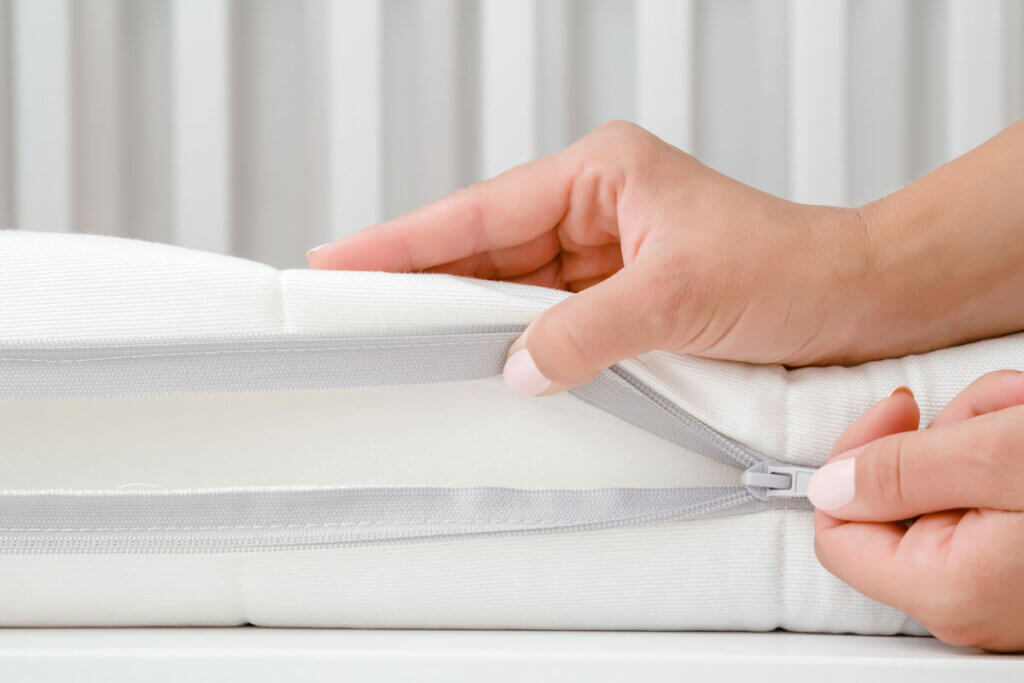
Hardness level
The firmness level of the baby mattress is one of its most important features. Babies should be comfortable. This often leads to the misconception that soft mattresses are best for them. However, under no circumstances should they sink more than two centimetres into the mattress. Otherwise there is a danger of suffocation. Instead, medium-hard to hard mattresses are suitable for babies. As babies’ spines are still developing, they do not have an S-curve like adults. This means that it lies best on a harder surface because its body – especially its head – is optimally supported that way.
Processing quality
In addition to the features of a mattress, the general quality of workmanship must also be of high quality. For example, a baby mattress may have a kick edge, but this may be poorly made. The best way to test this is to inspect the product in the shop and hold it in your hand. If you buy the mattress on the internet, you should consult product tests such as those by Stiftung Warentest. If a product is a test winner or has been rated at least “good”, it can be assumed that it has a high quality of workmanship.
Pollutants
It is not only the hardness of the baby mattress that can affect safety. Some products contain harmful substances that pose a significant health risk to the baby. Parents should therefore make sure that there are recognisable seals, such as Oeko-Tex Standard 100, Blue Angel or also from Stiftung Warentest. This way you can be sure that your baby is not at risk from harmful substances.
Air circulation
One of the most important features of a baby mattress is air circulation. The mattress should therefore be breathable. This way your baby gets enough oxygen while sleeping. It is even more important for allergy sufferers or babies with asthma, as they already have difficulty breathing. Well-ventilated mattresses also dry faster, which reduces the risk of mould. For the breathable mattress to achieve its full effect, the surface on which it lies should be free. Grids or slatted frames are good because they have gaps, allowing air to circulate. Last but not least, parents should air the baby mattress regularly, about every two to four weeks.
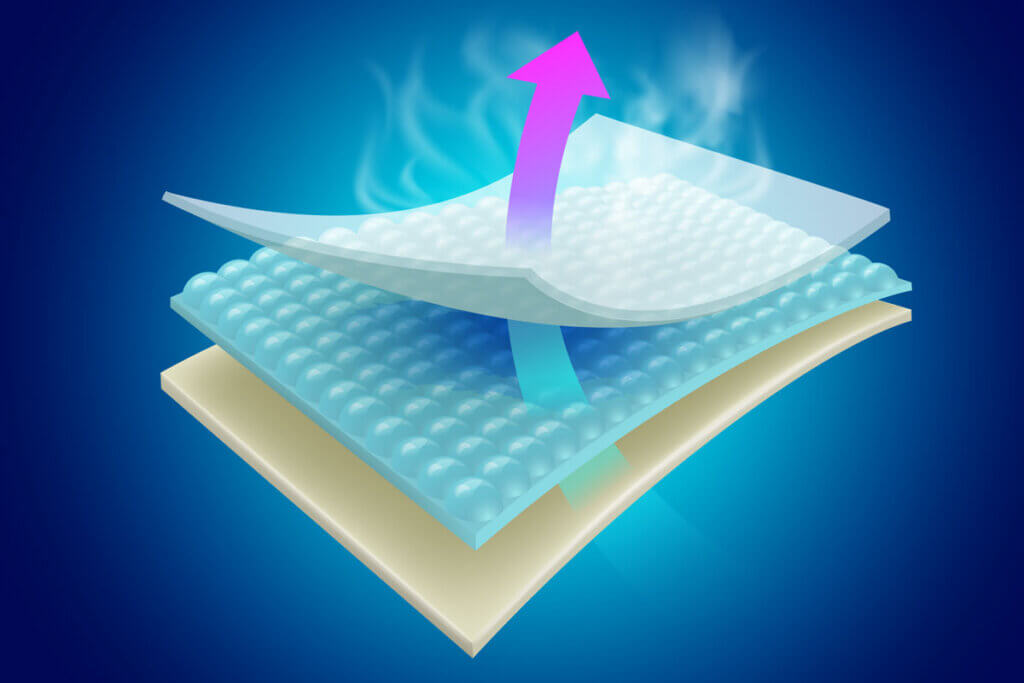
Size and height
Most mattresses that come on the market are 70 x 140 centimetres. Some are also available in the size 60 x 120 centimetres. It is crucial that the mattress fits well in the baby’s cot. The standard size is usually the best choice because a larger mattress can be used for longer. A child’s mattress should last into toddlerhood and with a 60 x 120 centimetre mattress, the child will outgrow the baby mattress more quickly. The height of the mattress should be at least eight centimetres, but ideally over ten. The thinner the mattress, the quicker it becomes worn out. A thick mattress therefore lasts longer.
Price
“You don’t save on shoes and mattresses” is a much-quoted saying. You should not save on baby mattresses either. You should not sacrifice features that ensure the baby’s safety and comfort in order to save money. That is not necessary either. There are also inexpensive baby mattresses that meet all the important criteria. This is confirmed by the test results of Stiftung Warentest. The first two places in the baby mattress test were occupied by mattresses that cost only 99 and 70 euros. The most expensive mattress, on the other hand, came last. There is no known upper price limit for baby mattresses. If you want to spend a lot of money, you are welcome to do so and will certainly find good products, for example at providers such as Alvi or Julius Zöllner. Parents can also buy a good mattress for 50 to 100 euros.
Tread edge
Although not all baby mattresses have a tread edge, it should be present for the safety of the baby or toddler. It is a reinforced, slightly raised edge that frames the mattress. It is used when the child is at the beginning of its attempts to stand up. For this, it usually needs the bed rail as a support. If the edges of the mattress are too soft, there is a risk that they will sink in under the child’s weight. This can cause them to pinch their feet or twist their ankle. The step edge serves to prevent these dangers. Parents should make sure that the mattress fits well in the bed and that there is not much space between the mattress and the bed rail. Otherwise, the step edge is not much use either.
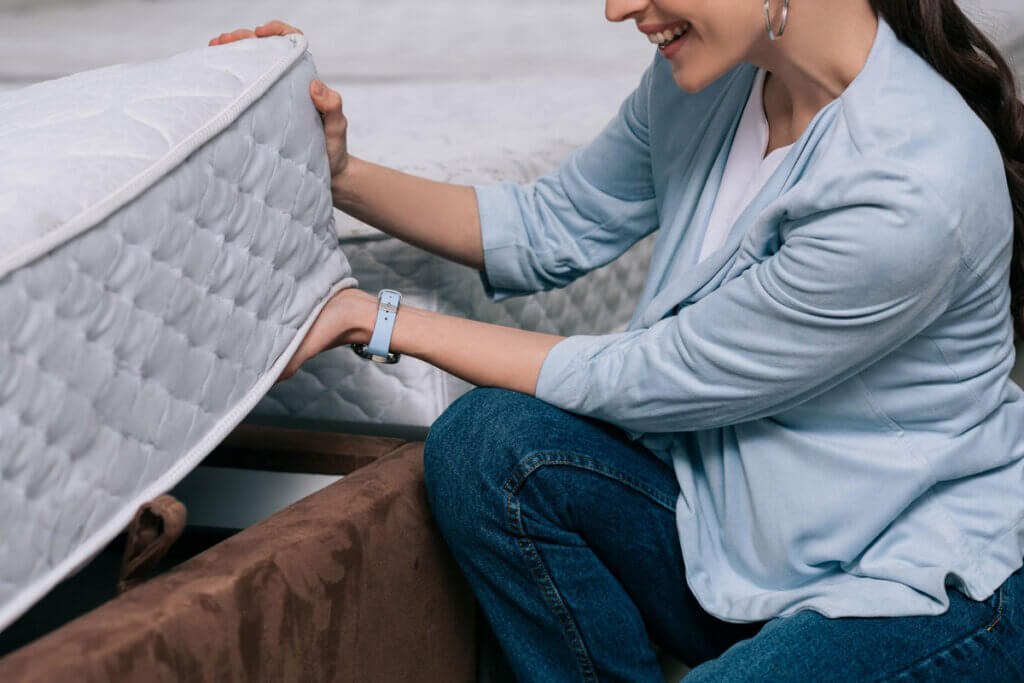
Wetness protection
Whether integrated or purchased as an extra accessory, a moisture guard is indispensable for a baby mattress. It prevents liquids from getting inside the mattress. Babies are very likely to wet the surface on which they lie, for example through sweat, saliva, vomit or body fluids that have escaped from the nappy. Mould can develop in a damp mattress, which poses health risks.
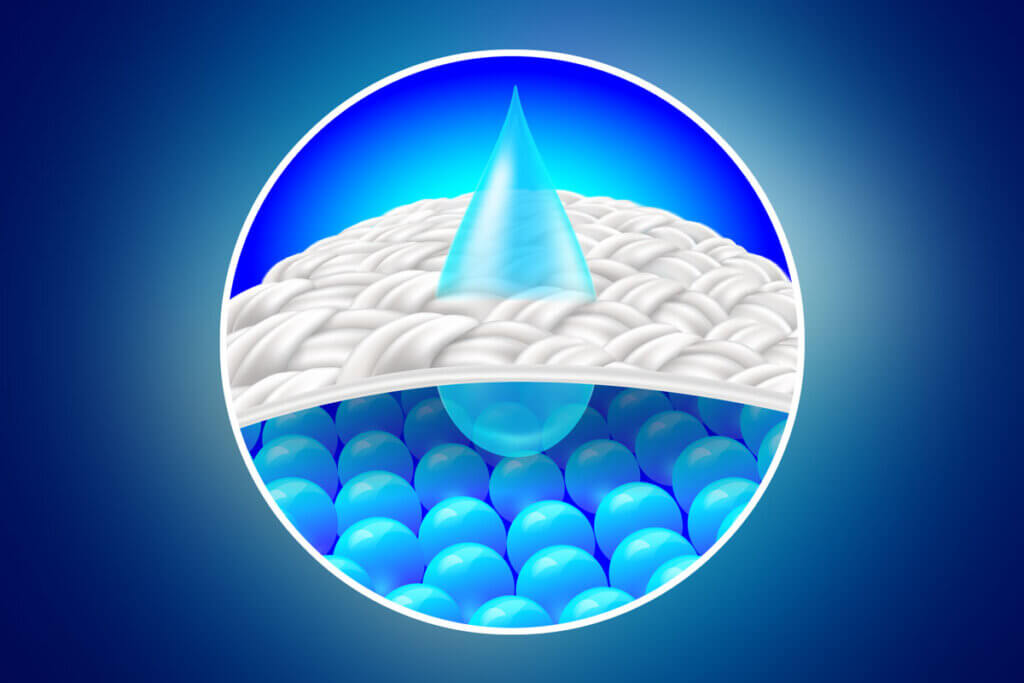
Since body fluids contain many bacteria, it is also important that the wetness protector is washable at 60 degrees Celsius so that as many germs as possible are killed. Note that it must not be waterproof on both sides, but only on the lower side. The top side must soak up liquids to keep the pad dry until parents notice that the mattress is damp and wash the wetness protector. If the waterproof surface is on top, no liquid penetrates, but the baby then lies in the wet, which can be uncomfortable and even dangerous to health. For this reason, most wetness protectors are made of cotton, a material that is kind to the skin, absorbs moisture and is easy to wash.
Baby and toddler page
Some mattress manufacturers advertise that their mattresses have a baby side and a toddler side. This way, after about a year, the mattress can be turned over when the baby has grown a lot and gained weight. The toddler side is supposed to be harder in order to better support the higher weight of the toddler. However, the Stiftung Warentest test shows that this feature is rarely effective. Often the manufacturers’ specifications are not correct. In the test, the two sides hardly showed any differences, except in cases where the baby side was too soft. It is best to get a mattress in advance that is hard and durable enough to provide comfortable and safe sleep during the toddler years.
How was this tested?
To test the hardness of the mattresses, the so-called ball test was carried out. A template with a round hole is placed on the mattress. The ball is placed in it. If it sinks in so deeply that its edges touch the template, the mattress is too soft.
Tips for use and care
The first step in buying a baby mattress is to find out which mattress is the right one. The most important selection criteria have already been explained. However, even the best mattress is of no use if it is not used and cared for properly. Therefore, you will find tips on how to use and care for baby mattresses here.
What should I pay attention to when using a baby mattress?
The mattress should fit well in the baby or child’s bed to prevent the baby from trapping limbs between the bed and the mattress. The gap between the bed and the mattress should therefore not be wider than three centimetres. The step edge assists in this regard. If there is too much space, however, it is of little use. Second-hand purchases are environmentally conscious and economical, but they are problematic when buying a baby mattress. After all, it’s hard to know what condition the mattress is in, even if it seems fine at first glance. Especially if you want to use the product for a long time, you should invest in a new, high-quality baby mattress. Parents can support the air circulation of the mattress by letting the new mattress air out for a few days before using it for the first time. Later, it should continue to be properly aired every two to four weeks to maintain its breathable condition.
How do I care for a baby mattress?
First of all, the cover should be removed and washed. Make sure that you use a cover that can be washed at 60 degrees Celsius. Then the mattress must be vacuumed to remove dust and coarse dirt. If you want to wash the baby mattress – which is rarely necessary – it is best to use a bathtub or a large bucket. Scrub the mattress with a sponge and a little detergent or fabric cleaner and then wash it out with warm water. Before you put the mattress back in the cot, it should be dried completely in the fresh air. Otherwise mould could form. Last but not least, it is advised to turn the mattress over regularly so that it does not become saggy on one side.
What does SIDS mean?
SIDS (Sudden Infant Death Syndrome) is a rare, sudden and unexplained death of babies – also known as “sudden infant death syndrome”. It usually happens during sleep and mainly affects babies in their first year of life. Scientists have not yet discovered any concrete preventive mechanisms to reduce the risk.
What is the safest way for babies to sleep?
The most important thing is that your baby sleeps on its back. This minimises the risk of him suffocating with his face in the mattress. It is also safer for the baby to sleep in its own bed. Parents who get nervous when they lose sight of their child can reduce this anxiety by buying a baby monitor. This allows them to see and hear their baby even from another room. A hard mattress also makes it easier for the baby to breathe.
The baby cot should only contain items that are absolutely necessary. Ideally, only the baby should lie in the sleeping bag. Objects such as cuddly toys, pillows or blankets provide a cosy atmosphere, but harbour a suffocation risk. After all, babies in their first months are not yet able to move their heads sufficiently in case they can no longer breathe during sleep.

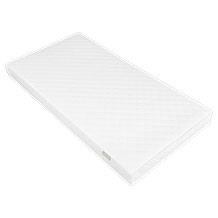
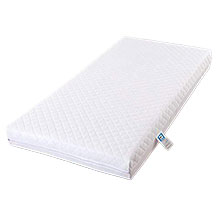
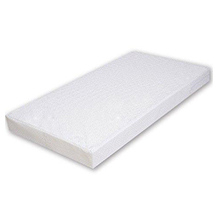
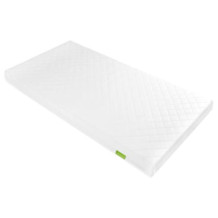
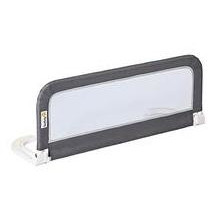
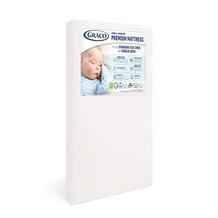
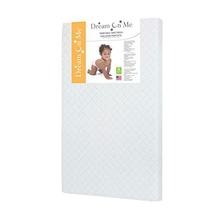
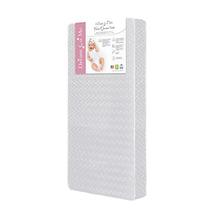
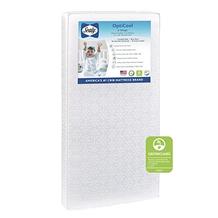
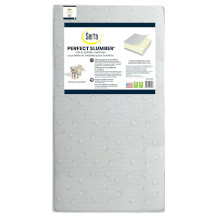

 41,370 reviews
41,370 reviews
